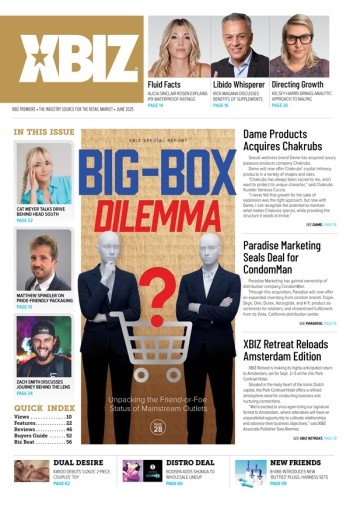For those looking to start their own blog, here are six easy steps to get you started:
1) What Kind of Blog?
There are a couple of ways that you can approach your blog, and it's always a good idea to decided first what you want to accomplish, who your target or core audience will be and how you want to "speak" to address your site's visitors. Some adult blogs are simply extended photo galleries featuring daily or multi-daily entries of photo and video galleries — and that works really well, giving webmasters a new "delivery" option for those popular content items. Other adult blogs really embrace the essence of blogging, using blogs as a way to reach out to their site's visitors — to "speak" to those people through the blog, getting "personal" through the sharing of site reviews, photo and video galleries, adult industry news items and other related information. There are many ways to use blogs within your business plan; just make sure you consider how much time you will spend making daily entries.
2) What Will You Sell?
You should also decide where you will get your content from (free sponsor content can be great for blogging!) — And think of creative ways to work in links to your affiliate programs or to your own pay site. Many successful blogs integrate sponsor content into their daily entries using regular posts such as:
- Gallery of the Day — use with top sponsors that provide free hosted galleries so you can customize your entries, and choose a theme or a particular model or porn star. You and can write your own lead-in description for keywords' sake.
- Video of the Day — many top sponsors are now offering the use of embedded videos that contain your affiliate code. As with the photo gallery option above, you can choose your own videos featuring specific porn stars or models and write your own lead-in full of related keywords.
- DVD of the Day — most VOD or video retail sites have amazing content that you can use in your posts. Mini-reviews, information from the adult DVD box cover, information on who stars in the video, the niche or fetish covered in the video and, of course, an image of the box cover will help you to promote DVD downloads, on-demand viewing or sales to your site's visitors.
Other ideas include 'porn star of the day,' 'fetish of the day' (could be instructional), sex toy review of the day,' etc.
3) Building Your Blog
There are many free blog programs available for you to choose from when building your first blog. Your best bet, though, is to start off with your own in-house blog from the get-go. You want to be able to expand, tweak and make it your own, so my recommendation is to launch your blog using Wordpress.
4) Designing Your Blog
Wordpress makes it easy — so easy that you can even choose from hundreds of pre-configured themes or templates to get your blog started with a pretty face. You can tweak those templates and make them your own, adding spots for banner advertising, your own custom logo and site name — or anything else you can think of. Wordpress comes with two very basic templates — the default template, which is a plain blue-and-white design and Wordpress Classic, the original throwback design to a few years ago.
Beyond that, there's an entire Wordpress theme directory that is full of unique, user-submitted designs that you can use freely for your blog. Search the database by blog type — 1, 2, 3 or more columns, by base color or by "most recent" updates. There is also a full instructional tutorial at the Wordpress site that will guide you through creating your own template or theme if you want to start completely from scratch.
5) Setting Up Your Blog
Once you have your design in place — or in the works, — sometimes it's an ongoing evolutionary process — you can start to set up your blog. As I mentioned earlier, there are lots of plug-ins and widgets that you can use to add things to your blog.
Installation for Wordpress-approved plug-ins is simple. In most cases you simply download, unzip and upload the files into the Wordpress folders and then use the "Plug-ins" menu from the main admin page to activate them. You can easily add and remove plug-ins throughout your blog, literally in minutes.
6) Getting Your Blog "Out There"
One of the biggest benefits to running a blog site versus another type of site is that it is very easy to get your site out there to the masses in a hurry. Social bookmarking tools help — and there are even plug-ins to help you use those more efficiently. By just simply adjusting your "ping" settings to include Google's Blog Search and other popular blog search tools and services, you can get spidered, listed and linked to throughout the blogosphere in no time. Wordpress comes with a ready-made RSS feed, or you can create your own — just make sure to submit it to feed readers and add links to popular programs to make it easy for users to get your site's feeds.





